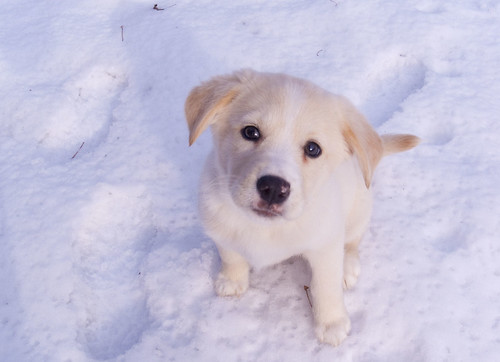In one of our longest-running experiments -- now archived -- we looked at visual short-term memory across a wide age range: from 14 years old to 90 years old. This has some advantages over the typical method, which is to test one group of young people (usually college students) and a group of older people (often recruited at a club or function frequented by folk of a certain age). With our data, we can find out not only whether visual working memory declines with age, but when it begins to decline and how rapidly.
The Memory Test
The experiment is simple. Participants are shown four novel objects for one second. Then they have to remember those objects for one second. After that, they are shown one object and asked if that is one of the four they just saw. A diagram of this method is on the right.
By the time the experiment stopped running, 8,374 people had completed the task (plus some who did not make it into this analysis -- for instance, people doing the experiment for the second time). This allowed us to look closely at the results year-by-year for the entire range of ages.
Results
Not surprisingly, performance did decline with age. Our statistical analyses suggest that the decline begins in the 30s (the best estimate was 36.6 years of age, with a 95% confidence interval from 32.2 to 41.1 years). Starting at 37 years old, performance on this task dropped by one percentage point every 2 1/2 years.

Why didn't those other recent studies show an age-related decline in visual short-term memory? One possibility is that the tasks those researchers used were simply too easy for differences to show up (the well-known ceiling effect), whereas our task and the ones used by the older experiments are all much harder.
Future Work
The exciting and novel part of this experiment is not that we showed age-related changes in memory performance. It would have been surprising if we didn't find any. What is more exciting is our ability to estimate the age at which it starts. My collaborators and I are currently running similar studies looking at aging for other types of mental tasks to see whether changes appear at similar ages. If changes appear at approximately the same age for two different tasks, that may suggest a common origin to the changes. We've run several more studies which I'll talk about in the future, and we're nearly ready to write up this work for publication.
Many thanks to the nearly 9,000 people who participated. Of course, we're always running new experiments at GamesWithWords.org. Please stop by.
See Also
This is not the only way the data from The Memory Test has been used. You read a compilation of previous posts on memory here.
Picture credit: http://www.flickr.com/photos/deepblue66/ / CC BY-NC-SA 2.0




















